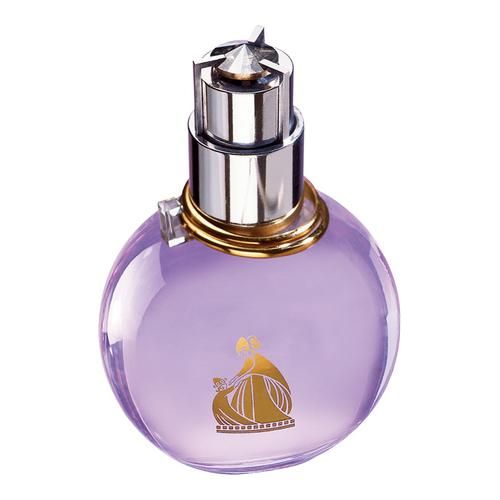The modern variation of Arpège
It was in 1925 that Jeanne Lanvin launched into perfumery with the creation of “Lanvin Parfums”. In 1927, and for the 30 years of her beloved daughter, Jeanne Lanvin imagines “Arpège”. An exceptional fragrance that has become quite simply legendary. Created 75 years later, “Éclat d’Arpège” is a gentle reinterpretation of the greatest brand success.
The modern variation of Arpège
Created to symbolize Jeanne’s unconditional love for her daughter Marguerite , “Arpège” is the greatest brand success. Having become legendary, “Arpège” is still one of the best-selling feminine perfumes in the world. In 2002, Lanvin however decided to modernize this timeless fragrance, to put love back to the heart of the 2000s. “Eclat d’Arpège” resembles an olfactory awakening, a contemporary musical score. “Éclat d’Arpège” sounds like a new, lively and fresh score. Thanks to this fragrance, it resonates like musical notes in the air. “Eclat d’Arpège” is full of emotions as it is steeped in history, even if it is lighter and fresher than its elder. If “Éclat d’Arpège” is as elegant as its elder, Lanvin has made this fragrance a modernization of the perfect “Arpège”.
Eclat d’Arpège and its fruity floral notes
It is the nose Karine Dubreuil which was chosen to develop the variation of “Arpège”. She decided to stay in the floral family. However, there are new ingredients, such as glycine. “Éclat d’Arpège” begins with the invigorating freshness of lemon associated with lilac flower. The red peony sublimates the heart of “Éclat d’Arpège”. With it, wisteria and the voluptuous peach blossom. The base will be more sensual with the presence of musk, amber and cedar from Lebanon. As for the bottle, it uses the codes of its elder. The ball always makes us dream, with the engraving still present. The bottle is this time, transparent, and reveals its lilac-colored juice. The clasp that crowns the whole is surmounted by a white diamond and two metal rings symbolizing the perfect harmony of couture and perfume.
75 years after the very legendary “Arpège”, Lanvin decided to bring it a whirlwind of freshness “Éclat d’Arpège”. As attractive as its elder, “Éclat d’Arpège” has been brought up to date, and is a sign of modernity. Fresh, floral and delicately sensual, “Éclat d’Arpège” plunges us back into the world of love, admiration, that of Jeanne Lanvin for her daughter Marguerite.
Between delicacy and refinement, “Éclat d’Arpège” is the reinterpretation of the legendary “Arpège” by Lanvin, released in 1927. Initially, “Arpège” is a fragrance that Jeanne Lanvin wished to offer to her daughter Marguerite for her 30th birthday. . An only child, Marguerite was also Jeanne’s muse. To thank her and prove her eternal love to her, Jeanne Lanvin decided to offer her a magnificent olfactory score with “Arpège”. In 2002, the Lanvin house wanted to revisit its great classic by bringing it more floral and fruity tones, it will be “Éclat d’Arpège”.
Éclat d’Arpège, a revisit of the perfume signed Karine Dubreuil
In order to revisit its legendary fragrance, Lanvin chose the perfumer Karine Dubreuil. Although the latter was born in Grasse, she nevertheless did not come from a family of perfumers. After starting out at the Florasynth company (now Symrise), Karine Dubreuil made a stint at Drom, before joining the Mane company in 2002. Currently, Karine Dubreuil works for the perfume house L’Occitane. On this subject she affirms “It’s true that having grown up in Grasse, I had a Provençal sensibility, which surely brought me closer to Occitane …” Demanding and talented, there is no doubt that Karine Dubreuil is a perfumer of convictions . We owe him magnificent fragrances such as “Mademoiselle Azzaro, L’Eau très belle” by Azzaro, or even “Womanity” by Thierry Mugler.
Fruity floral notes bursting with sensuality for Eclat d’Arpège < / h2>
To revisit the great classic of Lanvin, Karine Dubreuil wanted a composition between femininity and sensuality, between spontaneity and elegance. Because Karine Dubreuil wanted to keep the soul of “Arpège”, her revisit is also a fragrance of love, a real call to feelings. “Éclat d´Arpège” opens with the citrus and ultra fresh note of Sicilian lemon. These are quickly joined by the lilac. The lilac flower comes to us from the Middle East. It has been cultivated in Europe since the 18th century. The lilac flowers are grouped together in more or less dense pyramidal clusters.
In perfumery, the noses use the lilac flower from other natural essences and in a synthetic way. The lilac gives off finely flowery, balsamic tones, sometimes close to the scent of lily of the valley. The heart of “Éclat d´Arpège” is both flowery and fruity, and combines peach, wisteria and red peony. Straight from Japan, wisteria is known for its hardiness, as it resists temperatures down to -20 °. In May and June, the wisteria flowers and offers ultra-scented clusters, blue or white. In perfumery, wisteria is considered a “mute flower”, meaning that it cannot be extracted essential oil. The wisteria is then reproduced synthetically.
It offers floral, fruity and citrus tones at the same time. Finally, the base of “Éclat d’Arpège” is woody and amber and combines sensual and enveloping notes such as white musks, amber and cedar from Lebanon. The Art Deco style ball still serves as a bottle, thus recalling Jeanne Lanvin’s love for her daughter Marguerite.
Fruity Green
